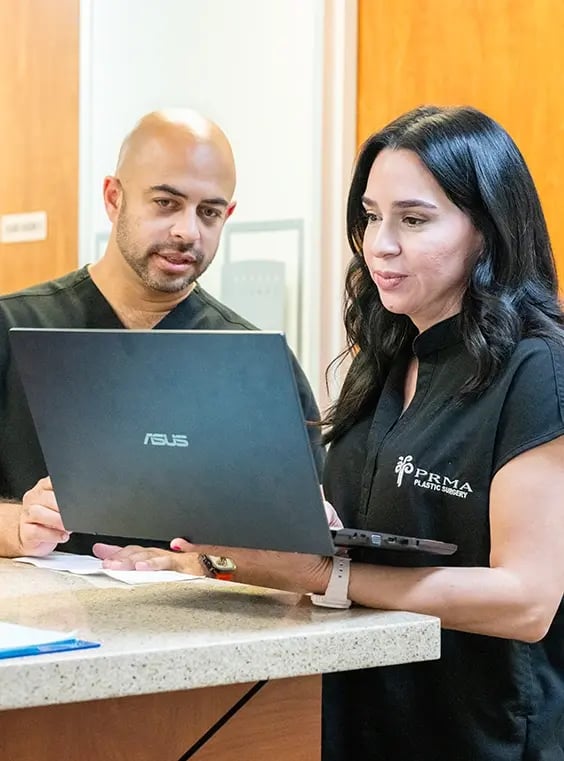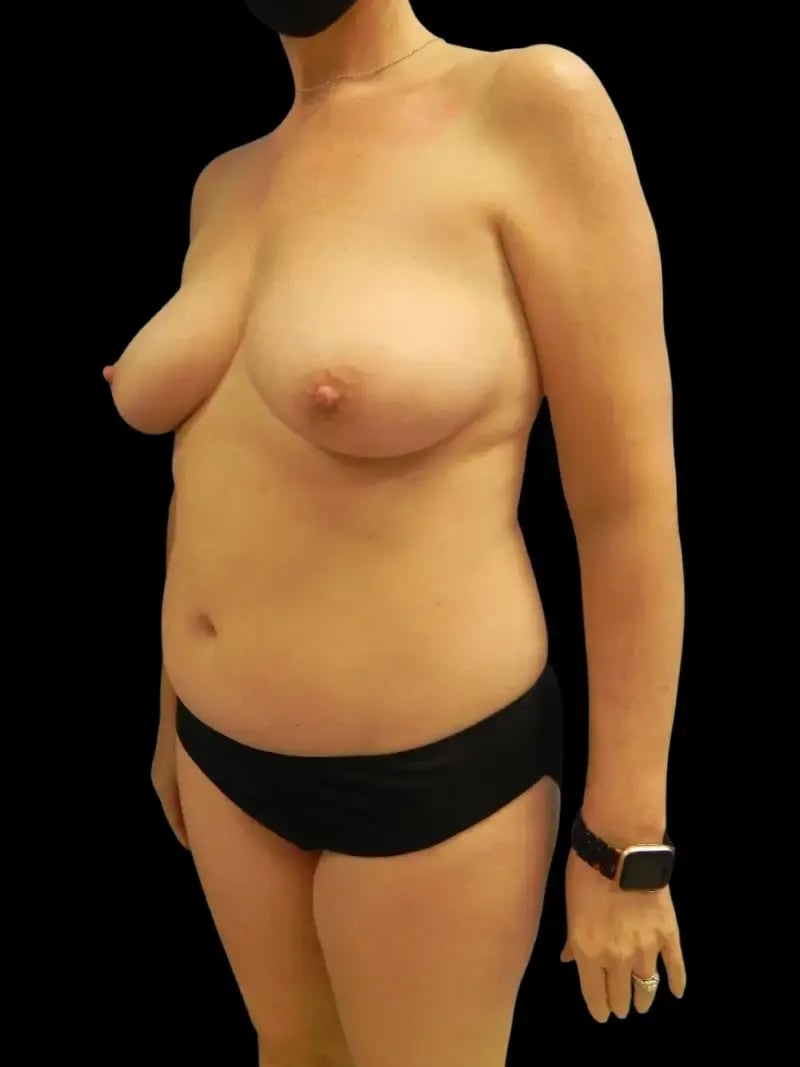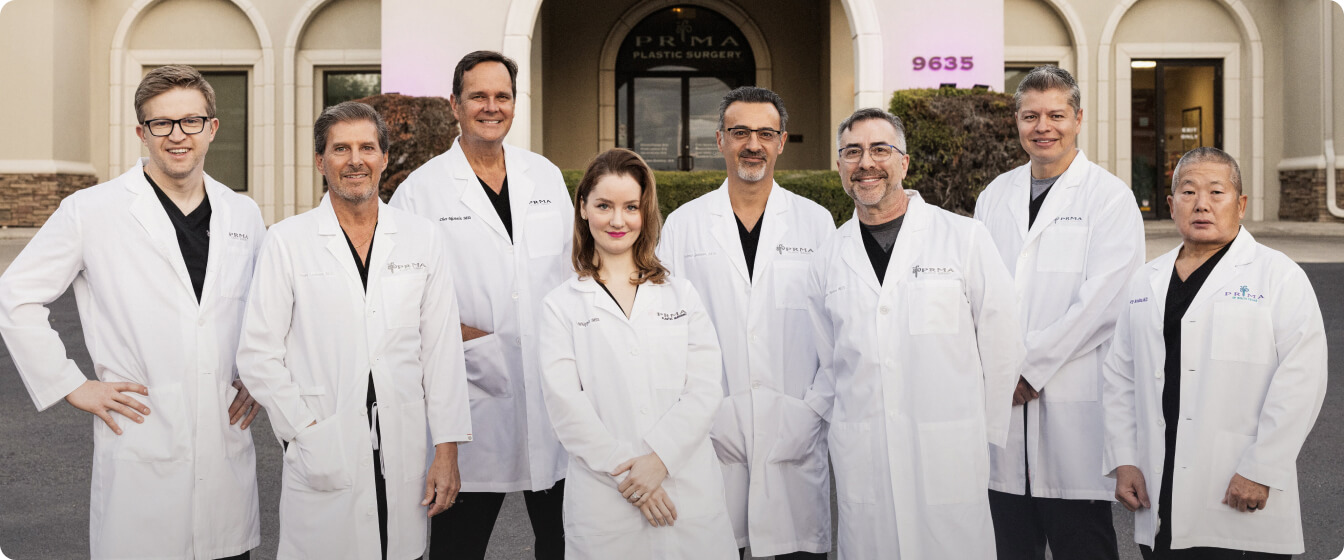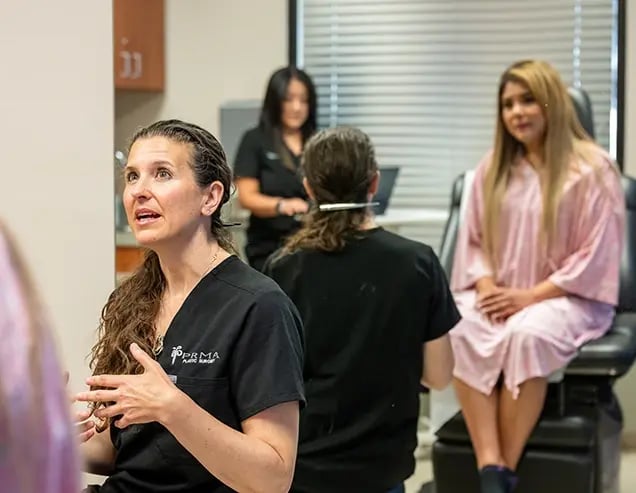%20Banner.png?width=1909&height=963&name=PRMA%20-%20Arm%20Lift%20(T3)%20Banner.png)
Arm Lift Surgery (Brachioplasty)
What is a Brachioplasty?
For many women, weight loss, aging, or the natural changes that follow breast cancer treatments can leave behind sagging skin on the upper arms. This can make wearing sleeveless clothing or feeling comfortable in one’s skin a daily struggle.
An arm lift, or brachioplasty, addresses this concern. Designed to remove excess skin and fat from the upper arms, a brachioplasty creates a smoother, more toned appearance.
Key Information
Takes 1.5–3 hours under general anesthesia
Return to light activities in about a week
Resume full activities in 4–6 weeks
Incisions hidden inside the arm; scars fade over time
Mild discomfort, swelling, and bruising are expected
Low risk of complications with expert care
Best for healthy non-smokers with excess arm skin
What to Expect During Surgery
During your arm lift, you’ll be comfortably asleep under general anesthesia. Our skilled surgeons make a discreet incision along the inner or back of the arm, depending on your needs.
Excess skin and fat are then carefully removed, and the underlying tissues are tightened to create a smoother contour. In some cases, liposuction is used to further refine the shape. The incisions are then closed with fine sutures designed to minimize scarring.
The entire procedure typically takes 1.5 to 3 hours, and it focuses on safety, precision, and natural-looking results.

Before & After








Recovery Timeline
-
Week 1:You’ll experience mild swelling, bruising, and tightness. Keep your arms elevated, limit movement, and avoid lifting heavy objects. Pain is manageable with prescribed medication.
-
Week 2:By the second week, swelling and bruising begin to improve. Most patients feel ready to return to light activities and work, but should avoid strenuous
-
Week 3-4:Discomfort continues to ease, and incisions begin to heal more visibly. If your surgeon approves, you may start gentle stretching and light exercise.
-
Week 5-6:By the fifth and sixth week, most swelling has resolved, and the scars are fading. With your surgeon's clearance, you can typically resume all normal activities, including exercise.


Am I a Candidate for an Arm Lift Surgery?
Like any surgery, brachioplasty is best suited for individuals with certain health and lifestyle criteria. Some patients may be better candidates than others, based on overall health, skin quality, and personal goals.
You may be a strong candidate for upper arm skin removal if:
-You have excess, sagging skin on your upper arms-You maintain a stable, healthy weight
-You are a non-smoker or willing to quit before and after surgery
-You are in good overall health without uncontrolled medical conditions
-You have realistic expectations about the results and recovery
Am I a Good Candidate for DIEP Flap?
If you’ve had a mastectomy or are planning one, and you’re seeking a long-term, natural alternative to implants, you may be a strong candidate for DIEP flap breast reconstruction. This procedure uses your own tissue to rebuild the breast and can often include sensation restoration at the same time.
Ideal candidates typically meet the following criteria:
- Have enough tissue in the lower abdomen to recreate the breast
- Prefer to avoid or remove implants
- Are seeking natural results that look and feel like their own body
- Are in good general health and able to tolerate a longer surgery
- May have had complications with previous reconstructions or implants
- Are interested in restoring breast sensation through nerve reconstruction (if eligible)
- Are not currently smokers (or are willing to quit prior to surgery)
- Do not have medical conditions that impair healing (e.g., uncontrolled diabetes)
Find Your Surgeon
Will Insurance Cover an Arm Lift?
Our team at PRMA is happy to assist you in navigating your insurance benefits and provide any necessary documentation to support your case.
For more information, visit [Insurance FAQs] in the patient resource center.

Preparing for Arm Lift Surgery
Learn more about:




